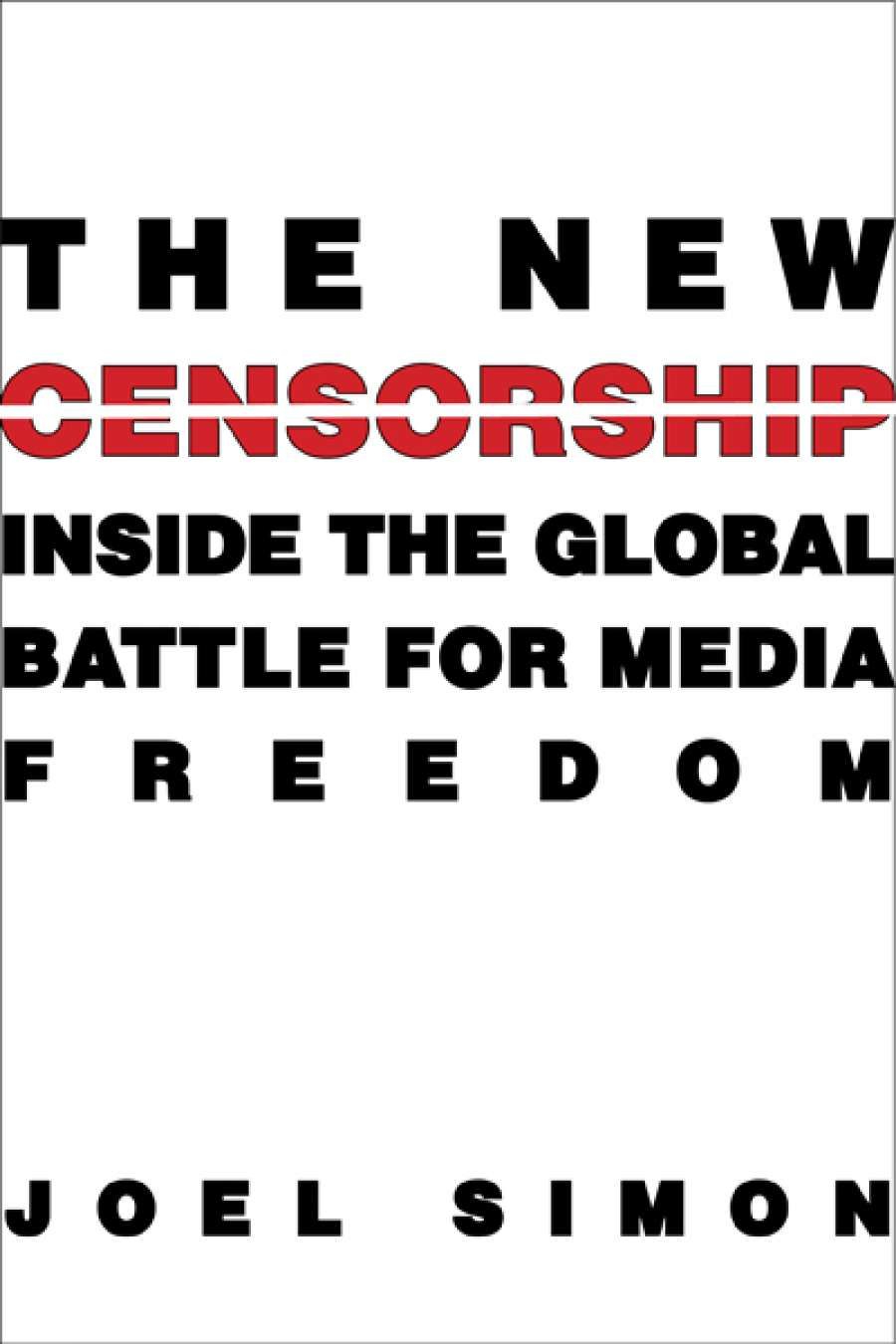
- Free Article: No
- Contents Category: Media
- Custom Article Title: Michael Douglas reviews 'The New Censorship' by Joel Simon
- Book 1 Title: The New Censorship
- Book 1 Subtitle: Inside the Global battle for media freedom
- Book 1 Biblio: Columbia Unviersity Press (Footprint), $27.95 hb, 236 pp, 9780231160643
Given the subject matter, the book’s omission of James Foley, Steven Sotloff, and many unfortunate others is telling. The Committee to Protect Journalists reports that seventeen journalists were killed in Syria in 2014, and at the time of writing twenty-one journalists have been killed in 2015. The Syrian civil war was raging in late 2013. However, there is no mention of Daesh or ISIS. In discussion of journalists as hostages, Simon refers to the thirty or so journalists missing in Syria as ‘believed kidnapped by the Islamist factions of the Syrian rebels’. Our language has changed since then; so too has the approach of those Islamist factions. Daesh’s use of polished snuff-propaganda, graphically capturing the murder of too many journalists, would be enough to justify a second edition of this book.
 Investigation of the crash site of MH17 by Dutch and Australian police officers (source: Netherlands Ministry of Defense via Wikimedia Commons)
Investigation of the crash site of MH17 by Dutch and Australian police officers (source: Netherlands Ministry of Defense via Wikimedia Commons)
‘Putin is taken to task for meagre government responses to the murder of journalists’
Rather than focusing on violence against journalists per se, The New Censorship is about attacks on those involved in promoting the open flow of information. The purpose of those attacks is not just to stop the victims from pursuing journalistic activities. Rather, they produce ‘fear and self-censorship, which ripple through the press corps’. The attack on Charlie Hebdo serves as a tragic validation of Simon’s argument. As Simon put it in a 2015 article, ‘An attack of this nature in Paris shows that the threat to journalists and free expression is global, with no safe haven.’ In the wake of the attack, we saw a silver lining in the tremendous demonstration of solidarity for the fourth estate and an energised defence of freedom of expression. ‘Je suis Charlie’ resonates perfectly with the mission underpinning the book.
Of course, many attacks on freedom of expression are less violent. Part of the book is dedicated to the role of the Internet in the dissemination of information and freedom of expression. There is a critique of web-filtering in China, and a defence of a free and open Internet. In January 2014 the future of a truly ‘free and open’ Internet was thrown into jeopardy, as an American Federal Appeals Court struck down an important net neutrality provision. At President Obama’s instigation, in February 2015, the Federal Communications Commission (FCC) reaffirmed a strong position on net neutrality. Nevertheless, these events illustrate the vulnerability of the global information order to the vicissitudes of America’s political dysfunction. This issue will continue to justify separate and detailed consideration.
‘Rather than focusing on violence against journalists per se, The New Censorship is about attacks on those involved in promoting the open flow of information’
A related theme is the ascending role of corporate superpowers as brokers of information. The book recalls the role that Twitter and Facebook continue to play in movements towards democracy. Facebook suffers a third-party critique for its approach to the security needs of activists working in dangerous environments. Simon does not join in the condemnation, but calls to make such companies ‘explicit allies in the struggle for press freedom’.
Since May 2014, Google has taken several steps towards an explicit alliance. In the Google Spain case, the European Court of Justice affirmed that Google had an obligation to respect what has been described as ‘the right to be forgotten’. The decision requires the company to delete links to certain data upon requests by members of the public, for essentially privacy reasons. At the time of writing, Google has removed nearly 250,000 URLs from European search results. Google has consistently protested the ruling, and communicates the removals to media organisations affected by the process. In late 2014, the BBC threatened to respond by publishing a list of its affected articles. Although this alliance is probably the result of a Putin-esque ‘crude calculation’ on Google’s part, it highlights the significance of large tech companies to the future of access to information and the future of censorship.
The book would be incomplete without consideration of America’s vast and absurd Internet surveillance program. Simon does not disappoint. He describes the link between privacy and freedom of expression, and questions whether online surveillance is having a chilling effect on the global media. Is surveillance a form of censorship? The jury is out, but our intuition, and experience, suggests that it is. Many people will not be bothered by the prospect of surveillance: they do not perceive themselves as in a panopticon. But Simon rightly identifies that the position is unique for journalists seeking to protect the identity of sources. We should question whether Snowden’s revelations have deterred a generation of whistle-blowers from ever coming forward.
In Australia, our new metadata legislation gained a last-minute carve-out protecting journalists from surveillance without a warrant. Simon’s question of ‘Who, precisely, is a journalist?’ has never been easy to answer, and has never been more important. The legislation is yet another demonstration of the timeliness of this book. The battle for media freedom is truly global, and won’t be won anytime soon.


Comments powered by CComment